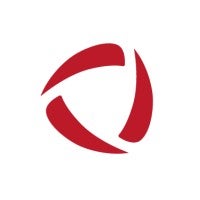Many businesses aren’t large enough to have a full IT security team. In fact, they may not have in-house IT administrators at all. However, cybersecurity doesn’t stop being important just because a company doesn’t have the budget to hire full-time security professionals, so many organizations turn to managed detection and response (MDR) service providers to handle their security threats.
Choosing a managed detection and response service provider
- What are managed detection and response (MDR) service providers?
- What should companies look for when choosing MDR services?
- Compare the Top MDR Providers
- Rapid7
- Sophos Managed Threat Response
- Arctic Wolf
- Crowdstrike
- Secureworks Taegis MDR
- Cybereason
- FireEye Mandiant
- SentinelOne Vigilance
What are Managed Detection and Response (MDR) Service Providers?
Managed detection and response (MDR) service providers are companies that monitor an organization’s network 24/7 to identify, investigate, and remediate threats. They’re often third-party businesses that contract with organizations to provide round-the-clock monitoring and protection. Focused on being proactive, MDR providers focus on hunting threats, rather than patching vulnerabilities.
What Should Companies Look for When Choosing MDR Services?
When choosing an MDR service provider, here are the things you should look for:
24/7 threat hunting and response
Unfortunately, cybersecurity threats don’t stick to a 9-to-5 schedule, and MDR teams can’t afford to either. Businesses need a service provider that offers 24/7 monitoring to keep them safe, no matter when an attacker strikes. Not only should an MDR provider offer 24/7 monitoring, but they should also be proactively threat hunting to find malware that could be hidden in the network.
Managed security infrastructure
Some security tools like security information and event management (SIEM) and some firewalls need security analysts to proactively manage them to provide the best results. An MDR service provider should request access to these tools or include their own, so they can proactively monitor them during off hours.
Also read: What is SIEM Software and How Can It Protect Your Company?
Ability to speak to experienced experts
The managed part of MDR is having experienced security analysts available for the internal team to talk to. It should be easy for businesses to get in contact with their MDR team to discuss potential breaches and ask for help when they’ve confirmed an attack. Many providers will offer regularly scheduled meetings to discuss breaches the company has faced and any new measures they should implement to improve their cybersecurity.
Global threat intelligence
There are thousands of known malware strains out there, but without the right threat intelligence, they might as well be unknown to businesses. Threat intelligence provides data on the malware’s signature, how it typically enters a network, and the type of data it targets. In order to adequately fortify vulnerabilities, MDR providers should offer threat intelligence and work with businesses to guard against potential threats.
Compare the Top MDR Providers
Here are some of the Best MDR Service Providers.
Rapid7

Pros
- The SOC is willing to provide additional information about threats to help companies improve their security procedures
- Easy to integrate and reduces security workloads on internal teams
- Accurate and responsive to incoming threats
Cons
- Some incidents incidents take longer to close than expected
- Can provide a lot of false positives, especially in the beginning.
Read next: 10 Ways Companies Screw Up Their Cyber Investigations

Pros
- Resourceful in identifying threats to a network
- The FireEye team is very responsive and provides helpful alerting
- Can perform advanced incident response activities like reverse malware engineering thanks to good backend support
Cons
- Some customers would like more alert types
- The licensing can be expensive compared to similar products
SentinelOne Vigilance

Pros
- The SOC is willing to provide additional information about threats to help companies improve their security procedures
- Easy to integrate and reduces security workloads on internal teams
- Accurate and responsive to incoming threats
Cons
- Some incidents incidents take longer to close than expected
- Can provide a lot of false positives, especially in the beginning.
Read next: 10 Ways Companies Screw Up Their Cyber Investigations

Pros
- Works closely with an organization’s operations team and improves the efficiency of security processes
- Easy to integrate with other security tools and simplifies workflows
- Analysts provide accurate reports quickly
Cons
- Some customers would like more canned, high-level reports for executives after a threat has been remediated
- Contacting Cybereason analysts could be easier
FireEye Mandiant

Pros
- Resourceful in identifying threats to a network
- The FireEye team is very responsive and provides helpful alerting
- Can perform advanced incident response activities like reverse malware engineering thanks to good backend support
Cons
- Some customers would like more alert types
- The licensing can be expensive compared to similar products
SentinelOne Vigilance

Pros
- The SOC is willing to provide additional information about threats to help companies improve their security procedures
- Easy to integrate and reduces security workloads on internal teams
- Accurate and responsive to incoming threats
Cons
- Some incidents incidents take longer to close than expected
- Can provide a lot of false positives, especially in the beginning.
Read next: 10 Ways Companies Screw Up Their Cyber Investigations

Pros
- The team is very responsive and addresses threats quickly
- Secureworks listens to its clients and makes relevant product upgrades
- Provides a personalized experience
Cons
- Some clients had minor performance issues with Secureworks on their cloud servers
- Doesn’t offer much of a mobile experience for monitoring
Cybereason

Pros
- Works closely with an organization’s operations team and improves the efficiency of security processes
- Easy to integrate with other security tools and simplifies workflows
- Analysts provide accurate reports quickly
Cons
- Some customers would like more canned, high-level reports for executives after a threat has been remediated
- Contacting Cybereason analysts could be easier
FireEye Mandiant

Pros
- Resourceful in identifying threats to a network
- The FireEye team is very responsive and provides helpful alerting
- Can perform advanced incident response activities like reverse malware engineering thanks to good backend support
Cons
- Some customers would like more alert types
- The licensing can be expensive compared to similar products
SentinelOne Vigilance

Pros
- The SOC is willing to provide additional information about threats to help companies improve their security procedures
- Easy to integrate and reduces security workloads on internal teams
- Accurate and responsive to incoming threats
Cons
- Some incidents incidents take longer to close than expected
- Can provide a lot of false positives, especially in the beginning.
Read next: 10 Ways Companies Screw Up Their Cyber Investigations

Pros
- Knowledgeable and likeable support team
- The dedicated representative actually gets to know the company’s environment
- They provide monthly reviews of the environment with suggestions on what to improve
Cons
- Some redundancies or overlaps with in-house teams
- The risk portal doesn’t have as many filters as some clients would like
CrowdStrike

- Very responsive to problems or general questions
- The service is easy to deploy and integrates well with other security systems
- Low resource requirements, meaning it doesn’t slow down devices
Cons
- Updates to the user interface (UI) can sometimes take time to learn
- The firewall management add-on is fairly basic compared to similar products
Secureworks Taegis MDR

Pros
- The team is very responsive and addresses threats quickly
- Secureworks listens to its clients and makes relevant product upgrades
- Provides a personalized experience
Cons
- Some clients had minor performance issues with Secureworks on their cloud servers
- Doesn’t offer much of a mobile experience for monitoring
Cybereason

Pros
- Works closely with an organization’s operations team and improves the efficiency of security processes
- Easy to integrate with other security tools and simplifies workflows
- Analysts provide accurate reports quickly
Cons
- Some customers would like more canned, high-level reports for executives after a threat has been remediated
- Contacting Cybereason analysts could be easier
FireEye Mandiant

Pros
- Resourceful in identifying threats to a network
- The FireEye team is very responsive and provides helpful alerting
- Can perform advanced incident response activities like reverse malware engineering thanks to good backend support
Cons
- Some customers would like more alert types
- The licensing can be expensive compared to similar products
SentinelOne Vigilance

Pros
- The SOC is willing to provide additional information about threats to help companies improve their security procedures
- Easy to integrate and reduces security workloads on internal teams
- Accurate and responsive to incoming threats
Cons
- Some incidents incidents take longer to close than expected
- Can provide a lot of false positives, especially in the beginning.
Read next: 10 Ways Companies Screw Up Their Cyber Investigations

Pros
- Provides quick support through the phone line
- Offers an API interface where companies can pull their own threat statistics
- The threat response team is very helpful and knowledgeable
Cons
- Don’t provide access to the tools they use
- Only works with Windows workstations and servers
Arctic Wolf

Pros
- Knowledgeable and likeable support team
- The dedicated representative actually gets to know the company’s environment
- They provide monthly reviews of the environment with suggestions on what to improve
Cons
- Some redundancies or overlaps with in-house teams
- The risk portal doesn’t have as many filters as some clients would like
CrowdStrike

Pros
- Very responsive to problems or general questions
- The service is easy to deploy and integrates well with other security systems
- Low resource requirements, meaning it doesn’t slow down devices
Cons
- Updates to the user interface (UI) can sometimes take time to learn
- The firewall management add-on is fairly basic compared to similar products
Secureworks Taegis MDR

Pros
- The team is very responsive and addresses threats quickly
- Secureworks listens to its clients and makes relevant product upgrades
- Provides a personalized experience
Cons
- Some clients had minor performance issues with Secureworks on their cloud servers
- Doesn’t offer much of a mobile experience for monitoring
Cybereason

Pros
- Works closely with an organization’s operations team and improves the efficiency of security processes
- Easy to integrate with other security tools and simplifies workflows
- Analysts provide accurate reports quickly
Cons
- Some customers would like more canned, high-level reports for executives after a threat has been remediated
- Contacting Cybereason analysts could be easier
FireEye Mandiant

Pros
- Resourceful in identifying threats to a network
- The FireEye team is very responsive and provides helpful alerting
- Can perform advanced incident response activities like reverse malware engineering thanks to good backend support
Cons
- Some customers would like more alert types
- The licensing can be expensive compared to similar products
SentinelOne Vigilance

Pros
- The SOC is willing to provide additional information about threats to help companies improve their security procedures
- Easy to integrate and reduces security workloads on internal teams
- Accurate and responsive to incoming threats
Cons
- Some incidents incidents take longer to close than expected
- Can provide a lot of false positives, especially in the beginning.
Read next: 10 Ways Companies Screw Up Their Cyber Investigations
Cons
- Some customers have had trouble using the platform with Azure
- The dashboards and reports need improvement
Sophos Managed Threat Response

Pros
- Provides quick support through the phone line
- Offers an API interface where companies can pull their own threat statistics
- The threat response team is very helpful and knowledgeable
Cons
- Don’t provide access to the tools they use
- Only works with Windows workstations and servers
Arctic Wolf

Pros
- Knowledgeable and likeable support team
- The dedicated representative actually gets to know the company’s environment
- They provide monthly reviews of the environment with suggestions on what to improve
Cons
- Some redundancies or overlaps with in-house teams
- The risk portal doesn’t have as many filters as some clients would like
CrowdStrike

Pros
- Very responsive to problems or general questions
- The service is easy to deploy and integrates well with other security systems
- Low resource requirements, meaning it doesn’t slow down devices
Cons
- Updates to the user interface (UI) can sometimes take time to learn
- The firewall management add-on is fairly basic compared to similar products
Secureworks Taegis MDR

Pros
- The team is very responsive and addresses threats quickly
- Secureworks listens to its clients and makes relevant product upgrades
- Provides a personalized experience
Cons
- Some clients had minor performance issues with Secureworks on their cloud servers
- Doesn’t offer much of a mobile experience for monitoring
Cybereason

Pros
- Works closely with an organization’s operations team and improves the efficiency of security processes
- Easy to integrate with other security tools and simplifies workflows
- Analysts provide accurate reports quickly
Cons
- Some customers would like more canned, high-level reports for executives after a threat has been remediated
- Contacting Cybereason analysts could be easier
FireEye Mandiant

Pros
- Resourceful in identifying threats to a network
- The FireEye team is very responsive and provides helpful alerting
- Can perform advanced incident response activities like reverse malware engineering thanks to good backend support
Cons
- Some customers would like more alert types
- The licensing can be expensive compared to similar products
SentinelOne Vigilance

Pros
- The SOC is willing to provide additional information about threats to help companies improve their security procedures
- Easy to integrate and reduces security workloads on internal teams
- Accurate and responsive to incoming threats
Cons
- Some incidents incidents take longer to close than expected
- Can provide a lot of false positives, especially in the beginning.
Read next: 10 Ways Companies Screw Up Their Cyber Investigations
Pros
- Support is very communicative about changes and updates
- Low number of false positives despite the large number of logs it ingests each day
- Organizations can create custom parsing rules for logs of internal applications
Cons
- Some customers have had trouble using the platform with Azure
- The dashboards and reports need improvement
Sophos Managed Threat Response

Pros
- Provides quick support through the phone line
- Offers an API interface where companies can pull their own threat statistics
- The threat response team is very helpful and knowledgeable
Cons
- Don’t provide access to the tools they use
- Only works with Windows workstations and servers
Arctic Wolf

Pros
- Knowledgeable and likeable support team
- The dedicated representative actually gets to know the company’s environment
- They provide monthly reviews of the environment with suggestions on what to improve
Cons
- Some redundancies or overlaps with in-house teams
- The risk portal doesn’t have as many filters as some clients would like
CrowdStrike

Pros
- Very responsive to problems or general questions
- The service is easy to deploy and integrates well with other security systems
- Low resource requirements, meaning it doesn’t slow down devices
Cons
- Updates to the user interface (UI) can sometimes take time to learn
- The firewall management add-on is fairly basic compared to similar products
Secureworks Taegis MDR

Pros
- The team is very responsive and addresses threats quickly
- Secureworks listens to its clients and makes relevant product upgrades
- Provides a personalized experience
Cons
- Some clients had minor performance issues with Secureworks on their cloud servers
- Doesn’t offer much of a mobile experience for monitoring
Cybereason

Pros
- Works closely with an organization’s operations team and improves the efficiency of security processes
- Easy to integrate with other security tools and simplifies workflows
- Analysts provide accurate reports quickly
Cons
- Some customers would like more canned, high-level reports for executives after a threat has been remediated
- Contacting Cybereason analysts could be easier
FireEye Mandiant

Pros
- Resourceful in identifying threats to a network
- The FireEye team is very responsive and provides helpful alerting
- Can perform advanced incident response activities like reverse malware engineering thanks to good backend support
Cons
- Some customers would like more alert types
- The licensing can be expensive compared to similar products
SentinelOne Vigilance

Pros
- The SOC is willing to provide additional information about threats to help companies improve their security procedures
- Easy to integrate and reduces security workloads on internal teams
- Accurate and responsive to incoming threats
Cons
- Some incidents incidents take longer to close than expected
- Can provide a lot of false positives, especially in the beginning.
Read next: 10 Ways Companies Screw Up Their Cyber Investigations

Pros
- Support is very communicative about changes and updates
- Low number of false positives despite the large number of logs it ingests each day
- Organizations can create custom parsing rules for logs of internal applications
Cons
- Some customers have had trouble using the platform with Azure
- The dashboards and reports need improvement
Sophos Managed Threat Response

Pros
- Provides quick support through the phone line
- Offers an API interface where companies can pull their own threat statistics
- The threat response team is very helpful and knowledgeable
Cons
- Don’t provide access to the tools they use
- Only works with Windows workstations and servers
Arctic Wolf

Pros
- Knowledgeable and likeable support team
- The dedicated representative actually gets to know the company’s environment
- They provide monthly reviews of the environment with suggestions on what to improve
Cons
- Some redundancies or overlaps with in-house teams
- The risk portal doesn’t have as many filters as some clients would like
CrowdStrike

Pros
- Very responsive to problems or general questions
- The service is easy to deploy and integrates well with other security systems
- Low resource requirements, meaning it doesn’t slow down devices
Cons
- Updates to the user interface (UI) can sometimes take time to learn
- The firewall management add-on is fairly basic compared to similar products
Secureworks Taegis MDR

Pros
- The team is very responsive and addresses threats quickly
- Secureworks listens to its clients and makes relevant product upgrades
- Provides a personalized experience
Cons
- Some clients had minor performance issues with Secureworks on their cloud servers
- Doesn’t offer much of a mobile experience for monitoring
Cybereason

Pros
- Works closely with an organization’s operations team and improves the efficiency of security processes
- Easy to integrate with other security tools and simplifies workflows
- Analysts provide accurate reports quickly
Cons
- Some customers would like more canned, high-level reports for executives after a threat has been remediated
- Contacting Cybereason analysts could be easier
FireEye Mandiant

Pros
- Resourceful in identifying threats to a network
- The FireEye team is very responsive and provides helpful alerting
- Can perform advanced incident response activities like reverse malware engineering thanks to good backend support
Cons
- Some customers would like more alert types
- The licensing can be expensive compared to similar products
SentinelOne Vigilance

Pros
- The SOC is willing to provide additional information about threats to help companies improve their security procedures
- Easy to integrate and reduces security workloads on internal teams
- Accurate and responsive to incoming threats
Cons
- Some incidents incidents take longer to close than expected
- Can provide a lot of false positives, especially in the beginning.
Read next: 10 Ways Companies Screw Up Their Cyber Investigations


